American exceptionalism is back as foreign inflows pour into US markets
By Deriv
 Just when it looked like the narrative of US dominance was starting to fray - cue April’s market wobble, Trump’s tariff tantrums, and a dollar in decline - global investors pulled a sharp U-turn. In June alone, foreign buyers poured a record $51.1 billion into US stocks and bonds, reversing a rare retreat the month before.
It’s the kind of comeback that has Wall Street veterans buzzing and doomsayers scrambling. The S&P 500 is once again eyeing fresh highs, and talk of “American exceptionalism” isn’t just back - it’s booming. Whether it’s faith in the strength of US institutions, a bet on consumer resilience, or simply a global flight to safety, one thing’s clear: the world is still betting big on brand America.
But with tariffs looming, yields rising, and other markets gaining ground, the question is: Can the US keep the magic alive?
A record rebound in foreign capital inflows
April was messy. The S&P 500 flirted with bear market territory, the Nasdaq fell through it, and Treasury yields went on a rollercoaster as investors braced for a wave of uncertainty. Trump’s surprise return to tariff hikes - dubbed “Liberation Day” by traders - sparked fears of capital flight, currency instability, and a potential unraveling of US market supremacy.
And then, just weeks later, came the whiplash: $311 billion in net foreign inflows in May, the highest monthly total ever recorded. That followed a modest $14.2 billion outflow in April, making the turnaround even more dramatic.
The numbers don’t lie. For the 12 months through May, net foreign inflows are fast approaching the record $1.4 trillion peak seen in July 2023 - right when “American exceptionalism” last dominated headlines.
Just when it looked like the narrative of US dominance was starting to fray - cue April’s market wobble, Trump’s tariff tantrums, and a dollar in decline - global investors pulled a sharp U-turn. In June alone, foreign buyers poured a record $51.1 billion into US stocks and bonds, reversing a rare retreat the month before.
It’s the kind of comeback that has Wall Street veterans buzzing and doomsayers scrambling. The S&P 500 is once again eyeing fresh highs, and talk of “American exceptionalism” isn’t just back - it’s booming. Whether it’s faith in the strength of US institutions, a bet on consumer resilience, or simply a global flight to safety, one thing’s clear: the world is still betting big on brand America.
But with tariffs looming, yields rising, and other markets gaining ground, the question is: Can the US keep the magic alive?
A record rebound in foreign capital inflows
April was messy. The S&P 500 flirted with bear market territory, the Nasdaq fell through it, and Treasury yields went on a rollercoaster as investors braced for a wave of uncertainty. Trump’s surprise return to tariff hikes - dubbed “Liberation Day” by traders - sparked fears of capital flight, currency instability, and a potential unraveling of US market supremacy.
And then, just weeks later, came the whiplash: $311 billion in net foreign inflows in May, the highest monthly total ever recorded. That followed a modest $14.2 billion outflow in April, making the turnaround even more dramatic.
The numbers don’t lie. For the 12 months through May, net foreign inflows are fast approaching the record $1.4 trillion peak seen in July 2023 - right when “American exceptionalism” last dominated headlines.
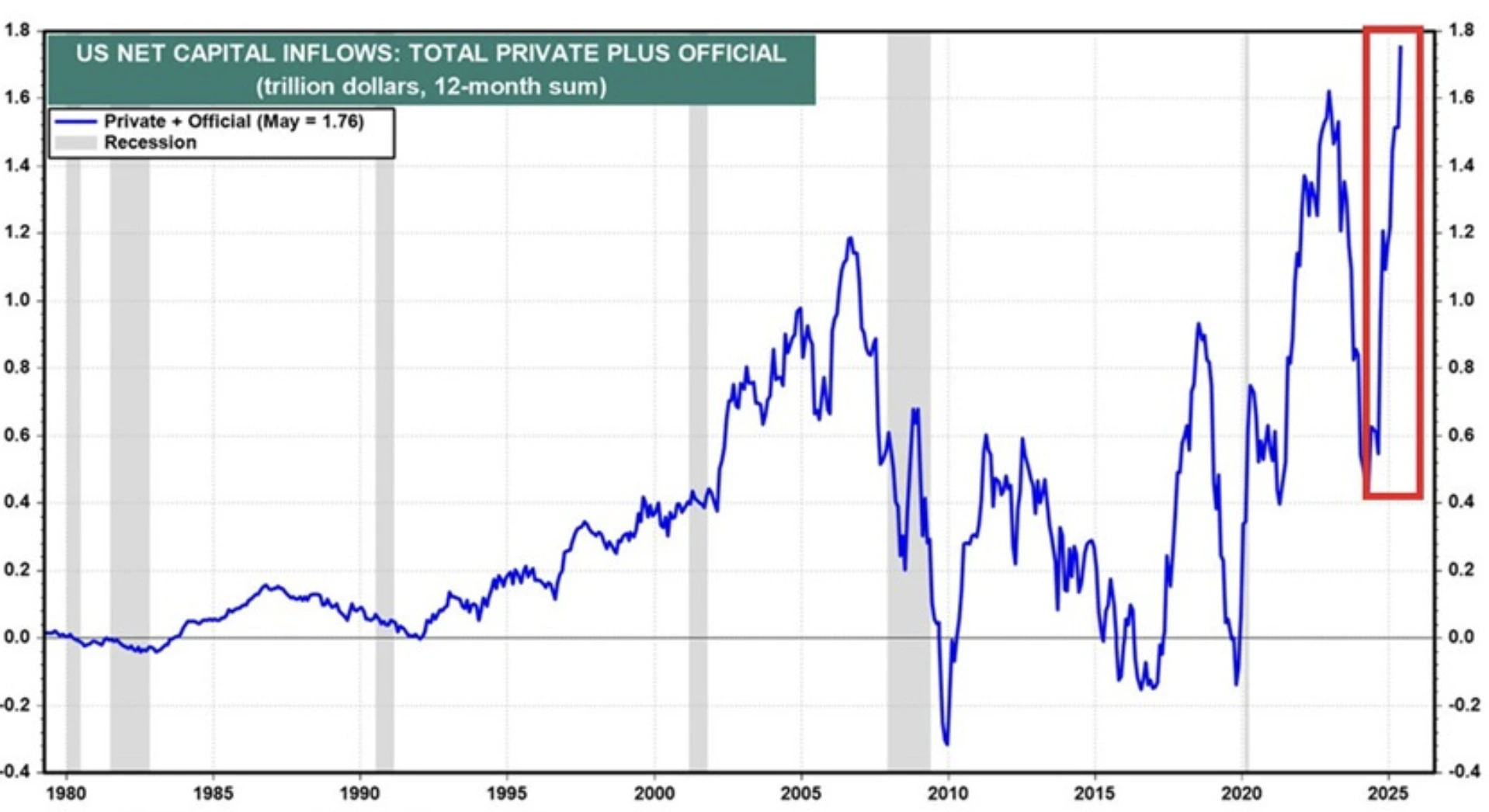 Source: LSEG & Yadeni Research, US Treasury
Why investors are flocking back to the US markets in 2025
Let’s break it down. What’s pulling all this foreign cash into US markets?
- Tariff shock therapy: The worst of Trump’s tariff threats are, for now, on hold. That pause has given markets time to breathe - and time for investors to snap up assets before things potentially escalate again.
- US consumer strength: Americans, somehow, are still spending. That’s propping up corporate earnings and fuelling optimism that the domestic economy can stay afloat even as global growth falters.
- The dollar and safe-haven appeal: Despite its recent slump, the dollar remains the world’s default safety blanket. With the World Bank forecasting just 2.3% global growth this year, investors are playing it safe - and US assets fit the bill.
- No real alternative: Europe’s in a slowdown. China’s recovery is patchy. When push comes to shove, the US still offers the deepest, most liquid financial markets on the planet.
As Robin Brooks of the Brookings Institution put it: “Markets are far more accepting of all the ups and downs than people realise. US exceptionalism is alive and well.”
The Dollar's safe-haven status has been under threat
Of course, not all that glitters is gold. The dollar just clocked its worst first half in over 50 years.
Source: LSEG & Yadeni Research, US Treasury
Why investors are flocking back to the US markets in 2025
Let’s break it down. What’s pulling all this foreign cash into US markets?
- Tariff shock therapy: The worst of Trump’s tariff threats are, for now, on hold. That pause has given markets time to breathe - and time for investors to snap up assets before things potentially escalate again.
- US consumer strength: Americans, somehow, are still spending. That’s propping up corporate earnings and fuelling optimism that the domestic economy can stay afloat even as global growth falters.
- The dollar and safe-haven appeal: Despite its recent slump, the dollar remains the world’s default safety blanket. With the World Bank forecasting just 2.3% global growth this year, investors are playing it safe - and US assets fit the bill.
- No real alternative: Europe’s in a slowdown. China’s recovery is patchy. When push comes to shove, the US still offers the deepest, most liquid financial markets on the planet.
As Robin Brooks of the Brookings Institution put it: “Markets are far more accepting of all the ups and downs than people realise. US exceptionalism is alive and well.”
The Dollar's safe-haven status has been under threat
Of course, not all that glitters is gold. The dollar just clocked its worst first half in over 50 years.
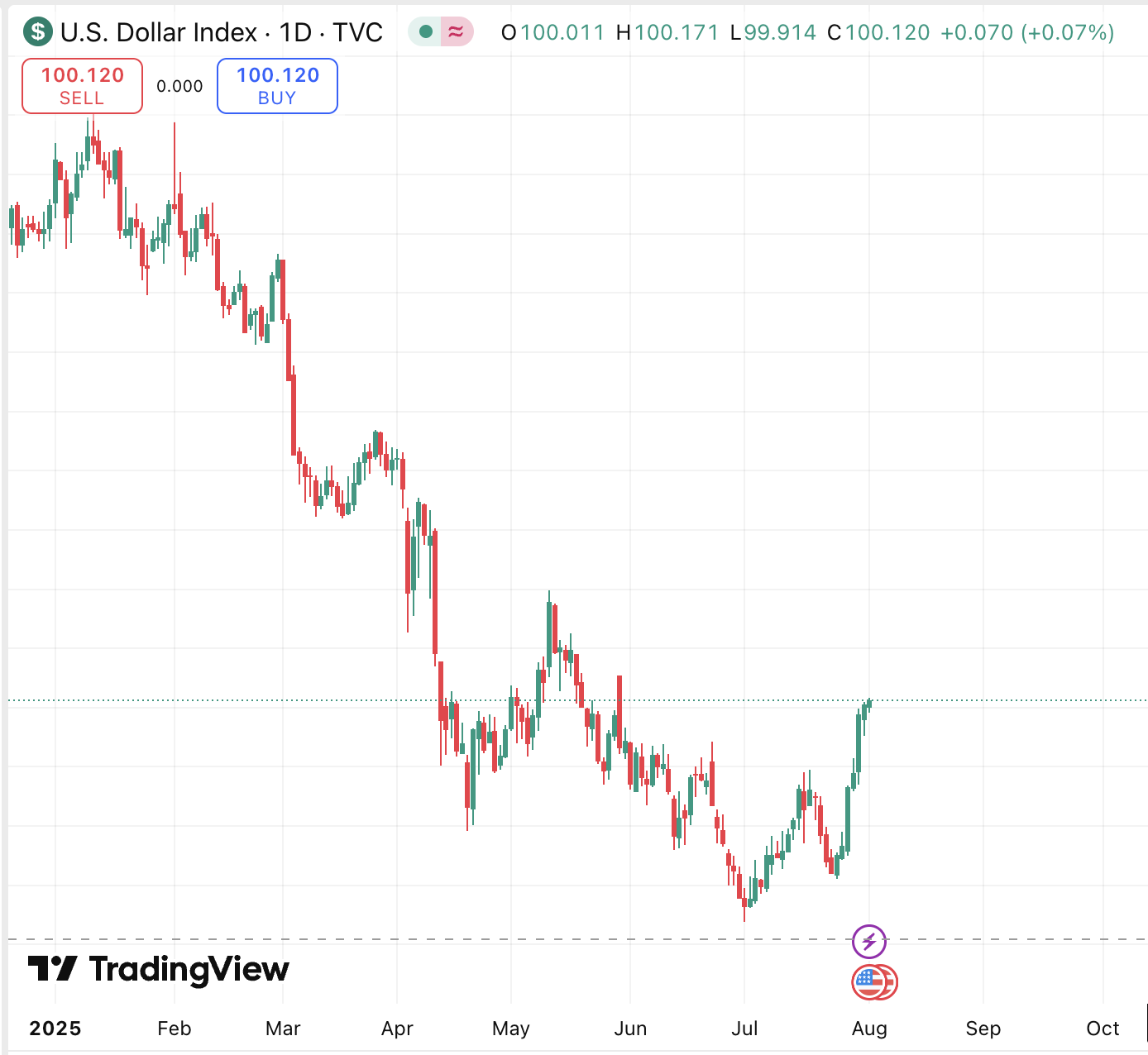 Source: TradingView
At the same time, the S&P 500 and Nasdaq have retaken prior highs, indexes in Europe and China have outperformed in recent months. There’s also the very real risk that ongoing trade negotiations could fall apart, triggering even higher tariffs down the line.
Then there’s the long-term picture. Critics like Ken Griffin argue the US is “tarnishing its brand” with erratic policy moves, while Deutsche Bank warns that the US’s structural edge - particularly the ability to finance cheaply through dollar dominance - is beginning to erode. Economist Jim Reid stated that they maintain a long-term negative outlook on the US dollar and anticipate a continued rise in US term premia.
Translation? Borrowing could get more expensive, and investors may not always be so forgiving.
The market’s mood right now
The mood right now is marked by relief and a renewed sense of confidence. While bond yields remain high, they’ve levelled off, and stocks are on the rise once more.
Crucially, any notion that global investors might turn their backs on the US has been firmly set aside, at least for now. Market veteran Ed Yardeni noted with a touch of irony that the latest Treasury data reaffirmed investors’ continued faith in the support of foreign buyers.
It’s a cheeky way of saying what many in the markets are thinking: when the chips are down, the world still chooses the US.
US markets 2025 outlook: Will the S&P 500 hit a new record?
That’s the trillion-dollar question. The ingredients are certainly in place:
- Record-breaking foreign inflows
- Easing tariff anxiety
- Earnings holding up
- A global economy still searching for footing
But the headwinds are real - high interest rates, policy unpredictability, and a crowded geopolitical calendar. If global investors get spooked again, this resurgence could quickly stall.
Still, for now, the stars seem to be aligning. The US is back in favour, the S&P 500 is climbing, and the narrative of American exceptionalism - once declared dead - is suddenly alive, well, and buying stocks.
At the time of writing, the S&P 500 price has retreated considerably even as significant capital inflows pour in. Volume bars show dominant buy pressure, with sellers offering some resistance, albeit without much conviction - hinting at a potential price reversal if sellers don’t offer much resistance. If we see an uptick, bulls could challenge the $6,435 price level, where the price has been rebuffed before. Conversely, should we see more downside, prices could find resistance at the $6,215 and $5,928 support levels.
Source: TradingView
At the same time, the S&P 500 and Nasdaq have retaken prior highs, indexes in Europe and China have outperformed in recent months. There’s also the very real risk that ongoing trade negotiations could fall apart, triggering even higher tariffs down the line.
Then there’s the long-term picture. Critics like Ken Griffin argue the US is “tarnishing its brand” with erratic policy moves, while Deutsche Bank warns that the US’s structural edge - particularly the ability to finance cheaply through dollar dominance - is beginning to erode. Economist Jim Reid stated that they maintain a long-term negative outlook on the US dollar and anticipate a continued rise in US term premia.
Translation? Borrowing could get more expensive, and investors may not always be so forgiving.
The market’s mood right now
The mood right now is marked by relief and a renewed sense of confidence. While bond yields remain high, they’ve levelled off, and stocks are on the rise once more.
Crucially, any notion that global investors might turn their backs on the US has been firmly set aside, at least for now. Market veteran Ed Yardeni noted with a touch of irony that the latest Treasury data reaffirmed investors’ continued faith in the support of foreign buyers.
It’s a cheeky way of saying what many in the markets are thinking: when the chips are down, the world still chooses the US.
US markets 2025 outlook: Will the S&P 500 hit a new record?
That’s the trillion-dollar question. The ingredients are certainly in place:
- Record-breaking foreign inflows
- Easing tariff anxiety
- Earnings holding up
- A global economy still searching for footing
But the headwinds are real - high interest rates, policy unpredictability, and a crowded geopolitical calendar. If global investors get spooked again, this resurgence could quickly stall.
Still, for now, the stars seem to be aligning. The US is back in favour, the S&P 500 is climbing, and the narrative of American exceptionalism - once declared dead - is suddenly alive, well, and buying stocks.
At the time of writing, the S&P 500 price has retreated considerably even as significant capital inflows pour in. Volume bars show dominant buy pressure, with sellers offering some resistance, albeit without much conviction - hinting at a potential price reversal if sellers don’t offer much resistance. If we see an uptick, bulls could challenge the $6,435 price level, where the price has been rebuffed before. Conversely, should we see more downside, prices could find resistance at the $6,215 and $5,928 support levels.
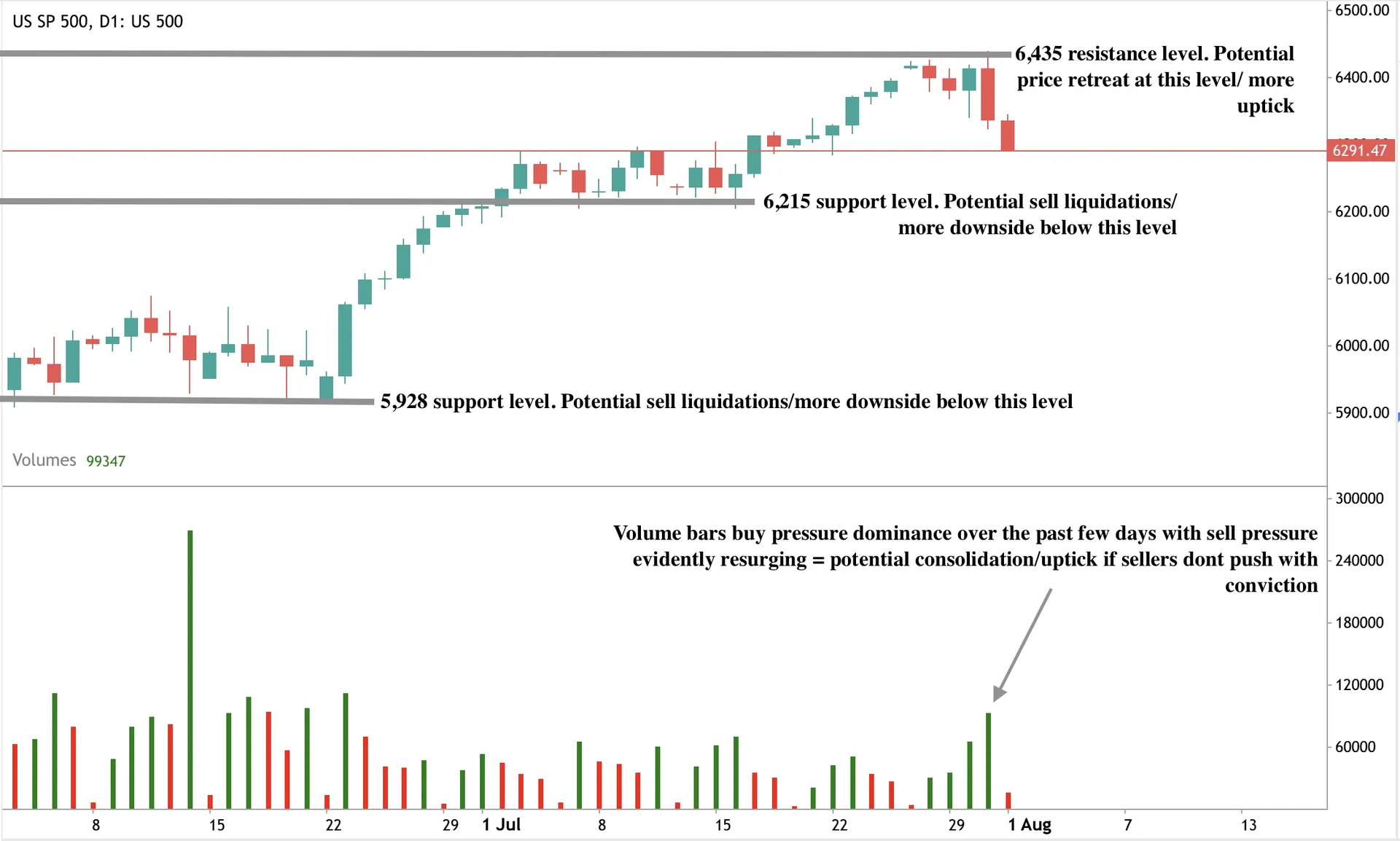 Source: Deriv MT5
Source: Deriv MT5The safe haven trade is not just about crisis anymore
By Deriv
Once upon a time, investors rushed to gold only when the world looked like it might catch fire. War, recession, a market meltdown - cue the stampede to safety. But lately, something curious is happening. Gold is climbing, the dollar is wobbling, and safe-haven demand is on the rise… while the headlines are, well, not exactly screaming doom.
Is buying the dip the best strategy in 2025?
By Deriv
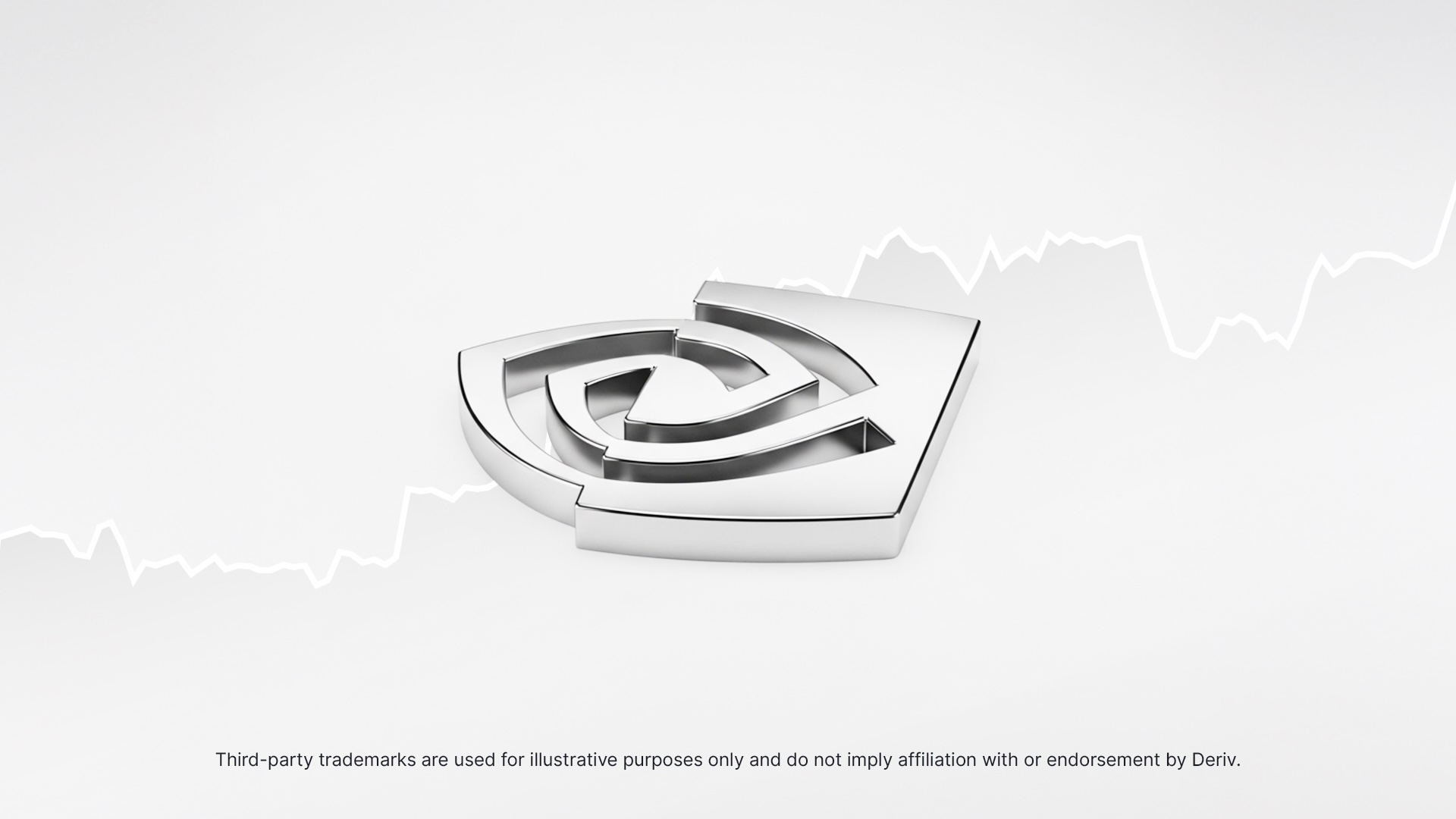 So far in 2025, what looks like market chaos has actually been a goldmine - at least for the brave. Every wobble, every sharp drop, every so-called “bloodbath” has turned into a buying opportunity. And those who dared to dive in? They’re laughing all the way to the bank.
With the S&P 500 at record highs and tech stocks like Nvidia bouncing back stronger after every fall, one question keeps coming up: is buying the dip not just working 0 but winning?
Nasdaq record highs
Let’s start with the numbers. According to analysts, if you’d simply bought the Nasdaq 100 every time it had a down day this year, you’d be up roughly 32% - the best result for that strategy in five years. For context, this time last year, that return sat at a modest 5%.
The pace we’re seeing now puts 2025 on track to become the best year for dip-buying since at least 1985. Yes, even better than the bubbly days of 1999.
So far in 2025, what looks like market chaos has actually been a goldmine - at least for the brave. Every wobble, every sharp drop, every so-called “bloodbath” has turned into a buying opportunity. And those who dared to dive in? They’re laughing all the way to the bank.
With the S&P 500 at record highs and tech stocks like Nvidia bouncing back stronger after every fall, one question keeps coming up: is buying the dip not just working 0 but winning?
Nasdaq record highs
Let’s start with the numbers. According to analysts, if you’d simply bought the Nasdaq 100 every time it had a down day this year, you’d be up roughly 32% - the best result for that strategy in five years. For context, this time last year, that return sat at a modest 5%.
The pace we’re seeing now puts 2025 on track to become the best year for dip-buying since at least 1985. Yes, even better than the bubbly days of 1999.
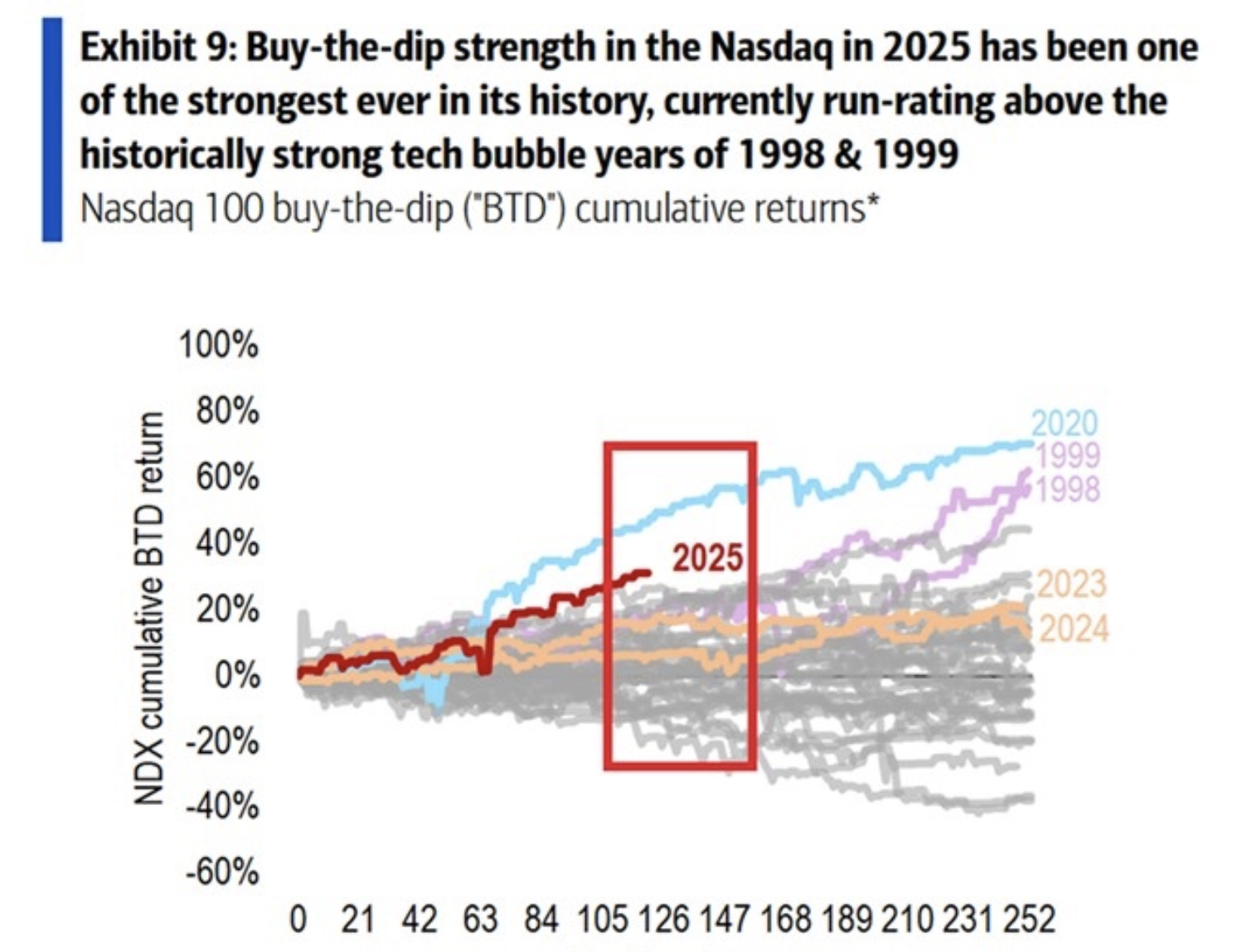 And it’s not like this has been a calm ride either. Out of the 124 trading days so far, the Nasdaq’s been down in 51 of them. That’s a whole lot of red candles - but also a whole lot of green rebounds.
Nvidia stock dips harder - and snaps back faster
If the market as a whole has rewarded dip-buyers, Nvidia has practically crowned them royalty.
The AI darling kicked off the year under pressure from China’s DeepSeek, a cheaper challenger in the machine-learning space. Then came the meltdown: on 27 January, Nvidia logged its worst-ever single-day drop - a brutal 17% fall. Ouch.
But that pain didn’t last. By early February, the stock had bounced back 20% heading into earnings. It wasn’t a one-off either. In April, Nvidia followed the market lower again, this time on fears surrounding Trump’s proposed tariffs. Shares tumbled 33% to their lowest point of the year.
And it’s not like this has been a calm ride either. Out of the 124 trading days so far, the Nasdaq’s been down in 51 of them. That’s a whole lot of red candles - but also a whole lot of green rebounds.
Nvidia stock dips harder - and snaps back faster
If the market as a whole has rewarded dip-buyers, Nvidia has practically crowned them royalty.
The AI darling kicked off the year under pressure from China’s DeepSeek, a cheaper challenger in the machine-learning space. Then came the meltdown: on 27 January, Nvidia logged its worst-ever single-day drop - a brutal 17% fall. Ouch.
But that pain didn’t last. By early February, the stock had bounced back 20% heading into earnings. It wasn’t a one-off either. In April, Nvidia followed the market lower again, this time on fears surrounding Trump’s proposed tariffs. Shares tumbled 33% to their lowest point of the year.
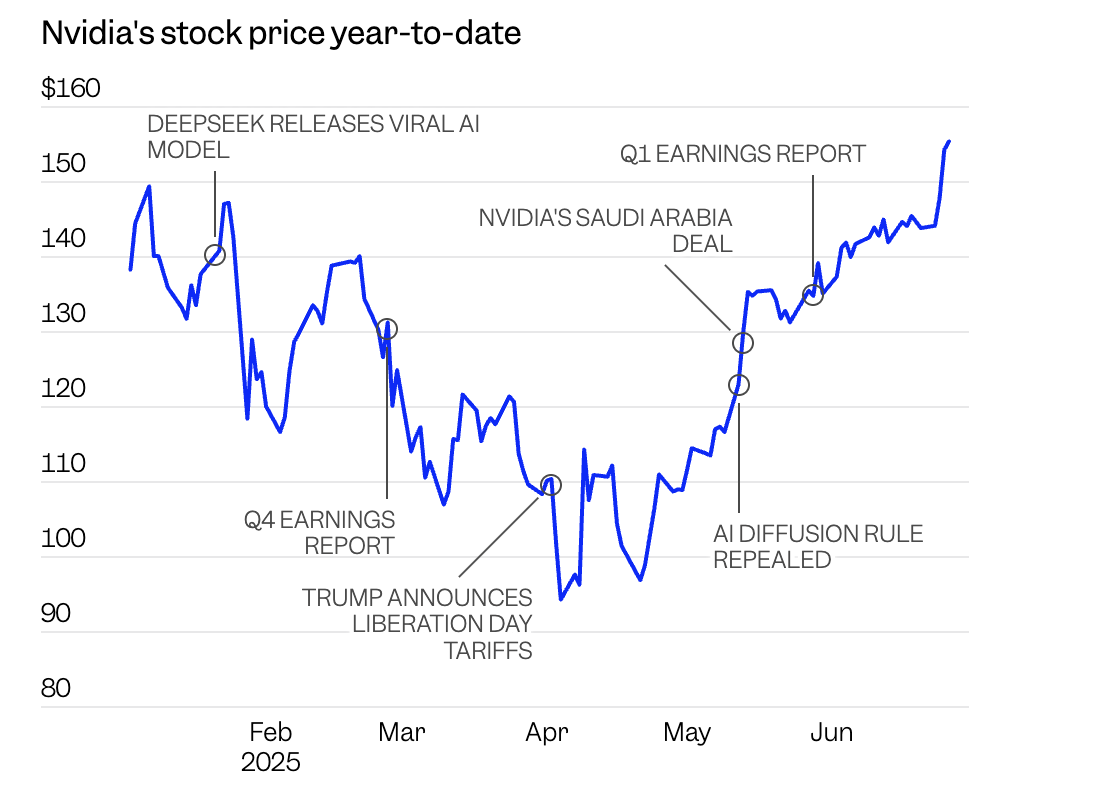 And then, you guessed it, another rally. A steep, unapologetic one. Since bottoming out, Nvidia has gone on to set new record highs, with shares rising 12% in just the past month. It’s been a dream for traders with the stomach for sharp drops and the conviction to hold through them.
Nvidia keeps hitting the Wall Street news
This isn’t just retail traders on Reddit throwing darts. Wall Street is increasingly convinced Nvidia’s dip-buying window is more than just luck.
Citi recently raised its price target to $190, suggesting a further 15% upside from current levels. One firm went even bolder, pegging a target at $250 - a price that would value Nvidia at a mind-bending $6 trillion.
And then, you guessed it, another rally. A steep, unapologetic one. Since bottoming out, Nvidia has gone on to set new record highs, with shares rising 12% in just the past month. It’s been a dream for traders with the stomach for sharp drops and the conviction to hold through them.
Nvidia keeps hitting the Wall Street news
This isn’t just retail traders on Reddit throwing darts. Wall Street is increasingly convinced Nvidia’s dip-buying window is more than just luck.
Citi recently raised its price target to $190, suggesting a further 15% upside from current levels. One firm went even bolder, pegging a target at $250 - a price that would value Nvidia at a mind-bending $6 trillion.
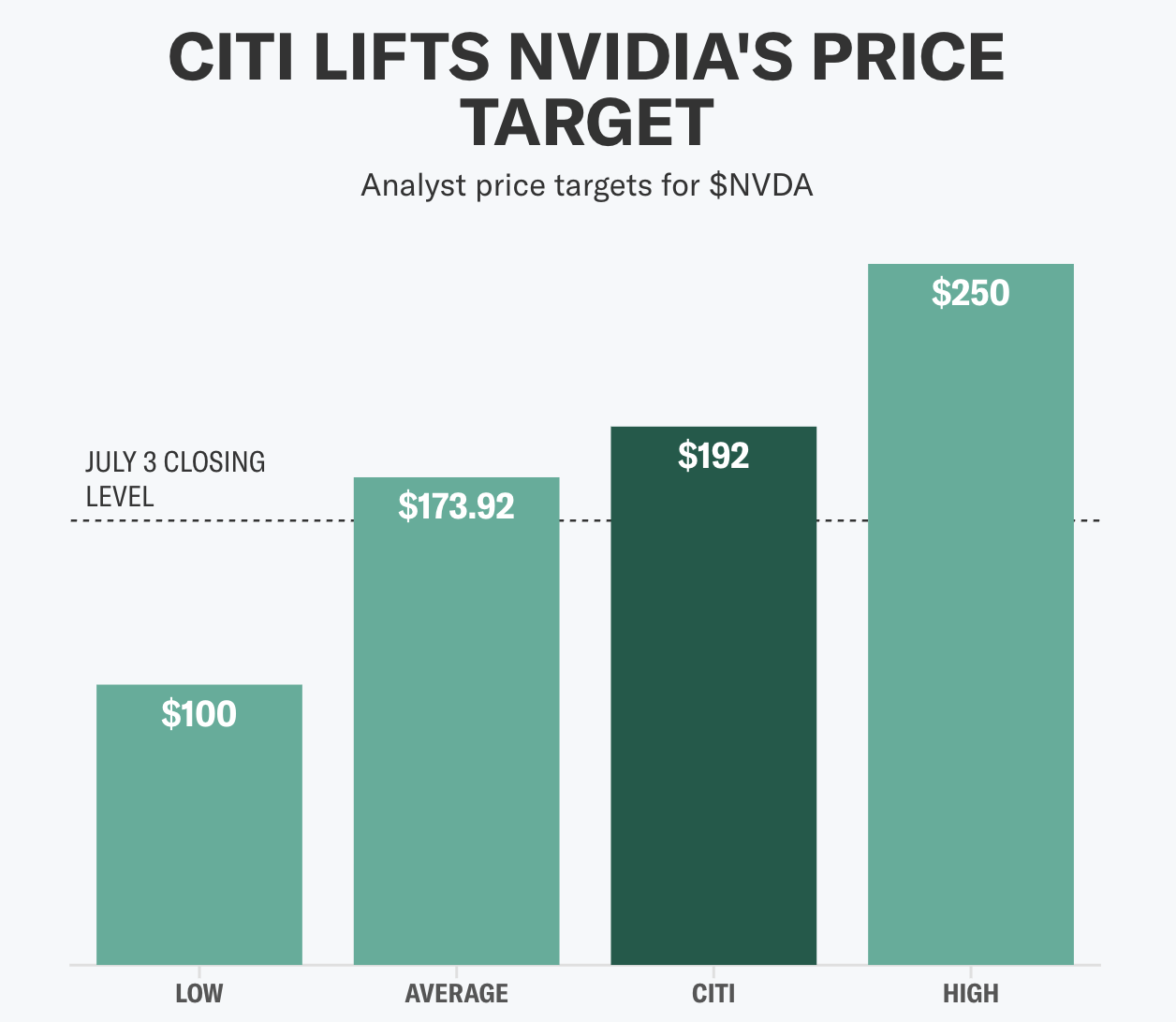 Source: Yahoo Finance
Why the enthusiasm? Simple: governments are buying AI infrastructure like it’s the new electricity. Citi’s analysts say sovereign demand alone could already be contributing billions of dollars in revenue this year. They expect it to ramp up even more in 2026.
The AI gold rush is real
At Nvidia’s recent generative AI conference, insiders floated a potential benchmark for national AI infrastructure: one supercomputer or 10,000 GPUs per 100,000 government employees. Think about that. That kind of buildout could keep Nvidia busy - and profitable - for years.
The company’s Blackwell GB200 chips are already powering most of these projects, and Citi believes the rollout is only accelerating. Supply chain concerns? Largely resolved. Rack buildouts? “Happening at a rapid pace.” Even the transition to next-gen GB300 chips is expected to be smooth, thanks to lessons learned from previous launches.
Global AI arms race: Green lights, with a hint of risk
Citi now expects Nvidia’s data centre revenue to rise 5% in FY 2027 and 11% in FY 2028, with networking sales surging even faster. Margins are expected to stabilise in the mid-70% range, which is excellent for a company scaling at this pace.
Source: Yahoo Finance
Why the enthusiasm? Simple: governments are buying AI infrastructure like it’s the new electricity. Citi’s analysts say sovereign demand alone could already be contributing billions of dollars in revenue this year. They expect it to ramp up even more in 2026.
The AI gold rush is real
At Nvidia’s recent generative AI conference, insiders floated a potential benchmark for national AI infrastructure: one supercomputer or 10,000 GPUs per 100,000 government employees. Think about that. That kind of buildout could keep Nvidia busy - and profitable - for years.
The company’s Blackwell GB200 chips are already powering most of these projects, and Citi believes the rollout is only accelerating. Supply chain concerns? Largely resolved. Rack buildouts? “Happening at a rapid pace.” Even the transition to next-gen GB300 chips is expected to be smooth, thanks to lessons learned from previous launches.
Global AI arms race: Green lights, with a hint of risk
Citi now expects Nvidia’s data centre revenue to rise 5% in FY 2027 and 11% in FY 2028, with networking sales surging even faster. Margins are expected to stabilise in the mid-70% range, which is excellent for a company scaling at this pace.
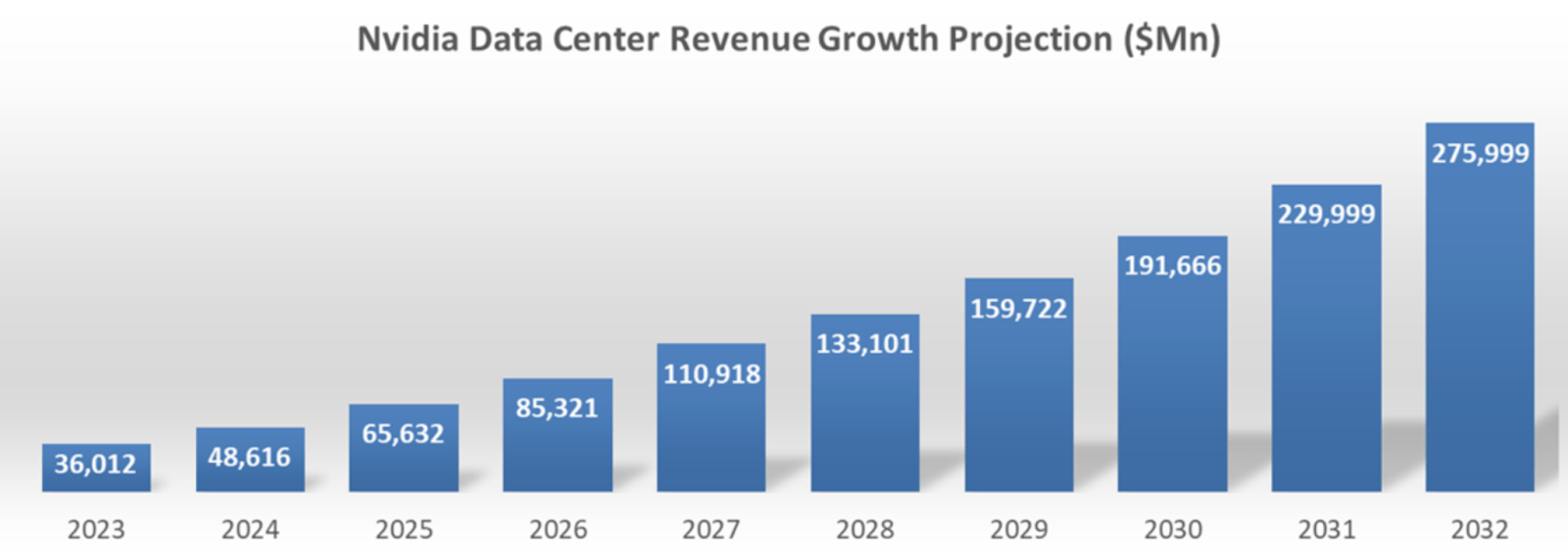 Source: Seeking Alpha
That said, there are still clouds on the horizon. Trump’s administration could reintroduce export restrictions - particularly with scrutiny on Malaysia and Thailand for possible indirect shipments to China. Regulatory risks remain real, especially for a company at the heart of a global AI arms race.
Dollar-cost averaging vs timing/buying the dip
If your timing’s been good this year, it’s not even close - buying the dip has been a beast. The market’s bouncing back with a vengeance, and Nvidia’s chart looks more like a trampoline than a trendline. Add in soaring demand, bullish analyst upgrades, and a possible sprint to a $4 trillion market cap, and it’s easy to see why traders are so confident.
But here’s the unfortunate twist, a Vanguard study analyzing 90 years of S&P 500 data, revealing that even perfect market timing to "buy the dip" underperformed dollar-cost averaging (DCA), challenging the common investor belief that timing dips maximises returns
Source: Seeking Alpha
That said, there are still clouds on the horizon. Trump’s administration could reintroduce export restrictions - particularly with scrutiny on Malaysia and Thailand for possible indirect shipments to China. Regulatory risks remain real, especially for a company at the heart of a global AI arms race.
Dollar-cost averaging vs timing/buying the dip
If your timing’s been good this year, it’s not even close - buying the dip has been a beast. The market’s bouncing back with a vengeance, and Nvidia’s chart looks more like a trampoline than a trendline. Add in soaring demand, bullish analyst upgrades, and a possible sprint to a $4 trillion market cap, and it’s easy to see why traders are so confident.
But here’s the unfortunate twist, a Vanguard study analyzing 90 years of S&P 500 data, revealing that even perfect market timing to "buy the dip" underperformed dollar-cost averaging (DCA), challenging the common investor belief that timing dips maximises returns
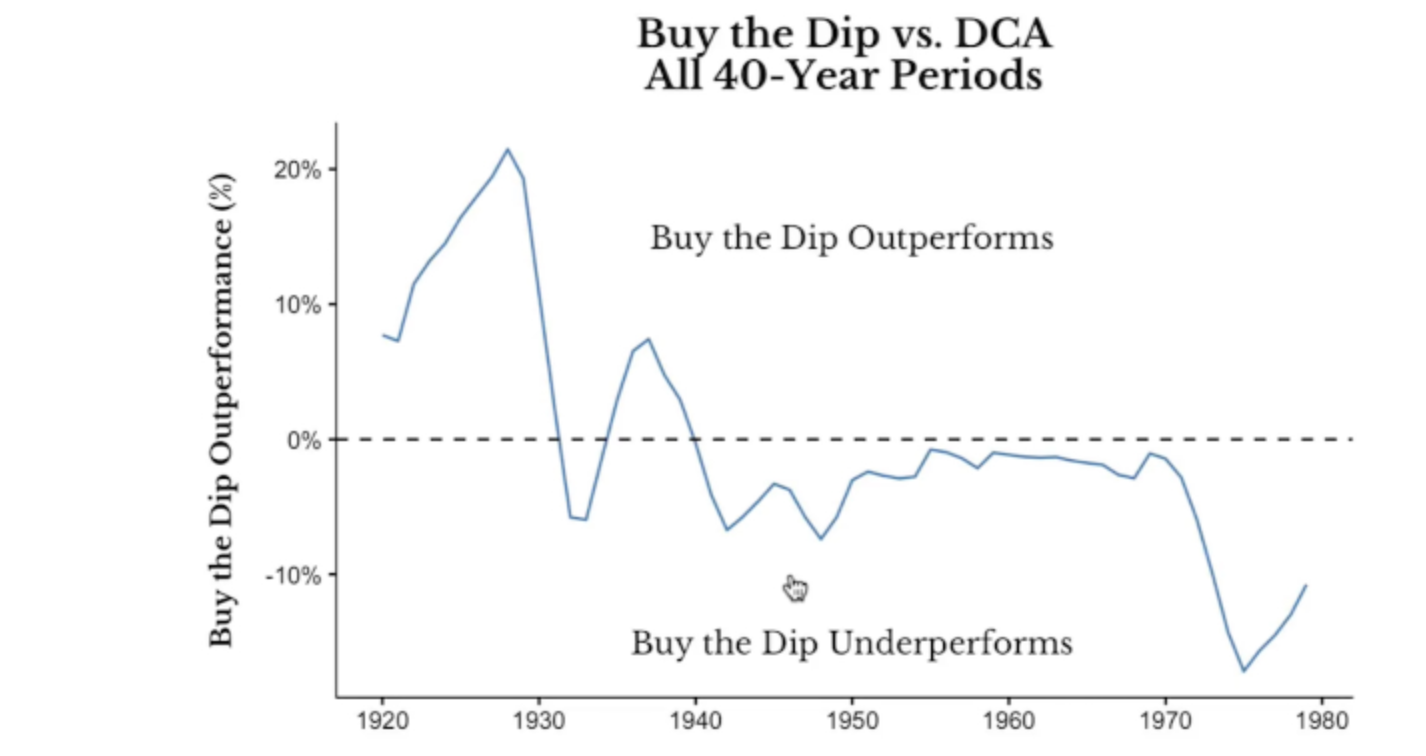 Source: Dollars and data.com, Christy capital
So, in a 2025 where buying the dip and holding your ground, especially with stocks like Nvidia, has rewarded you. the market’s been more than happy to reward you - the strategy has shown vulnerability in the long-term.
But as far as 2025 is concerned, volatility hasn’t been the enemy this year - it’s been the opportunity.
Nvidia outlook
At the time of writing, Nvidia is showing signs of buy-side exhaustion after a significant rally, hinting at a potential reversal. However, the volume bars show that dominant buy pressure over the past few days has been met by disproportionate sell-side pushback, hinting that an upside move could still be on.
If we see an uptick, prices could encounter resistance at the $161.55 resistance level. Conversely, if we see a slump, prices could find support floors at the $141.75, $132.75, and $103.35 support levels.
Source: Dollars and data.com, Christy capital
So, in a 2025 where buying the dip and holding your ground, especially with stocks like Nvidia, has rewarded you. the market’s been more than happy to reward you - the strategy has shown vulnerability in the long-term.
But as far as 2025 is concerned, volatility hasn’t been the enemy this year - it’s been the opportunity.
Nvidia outlook
At the time of writing, Nvidia is showing signs of buy-side exhaustion after a significant rally, hinting at a potential reversal. However, the volume bars show that dominant buy pressure over the past few days has been met by disproportionate sell-side pushback, hinting that an upside move could still be on.
If we see an uptick, prices could encounter resistance at the $161.55 resistance level. Conversely, if we see a slump, prices could find support floors at the $141.75, $132.75, and $103.35 support levels.
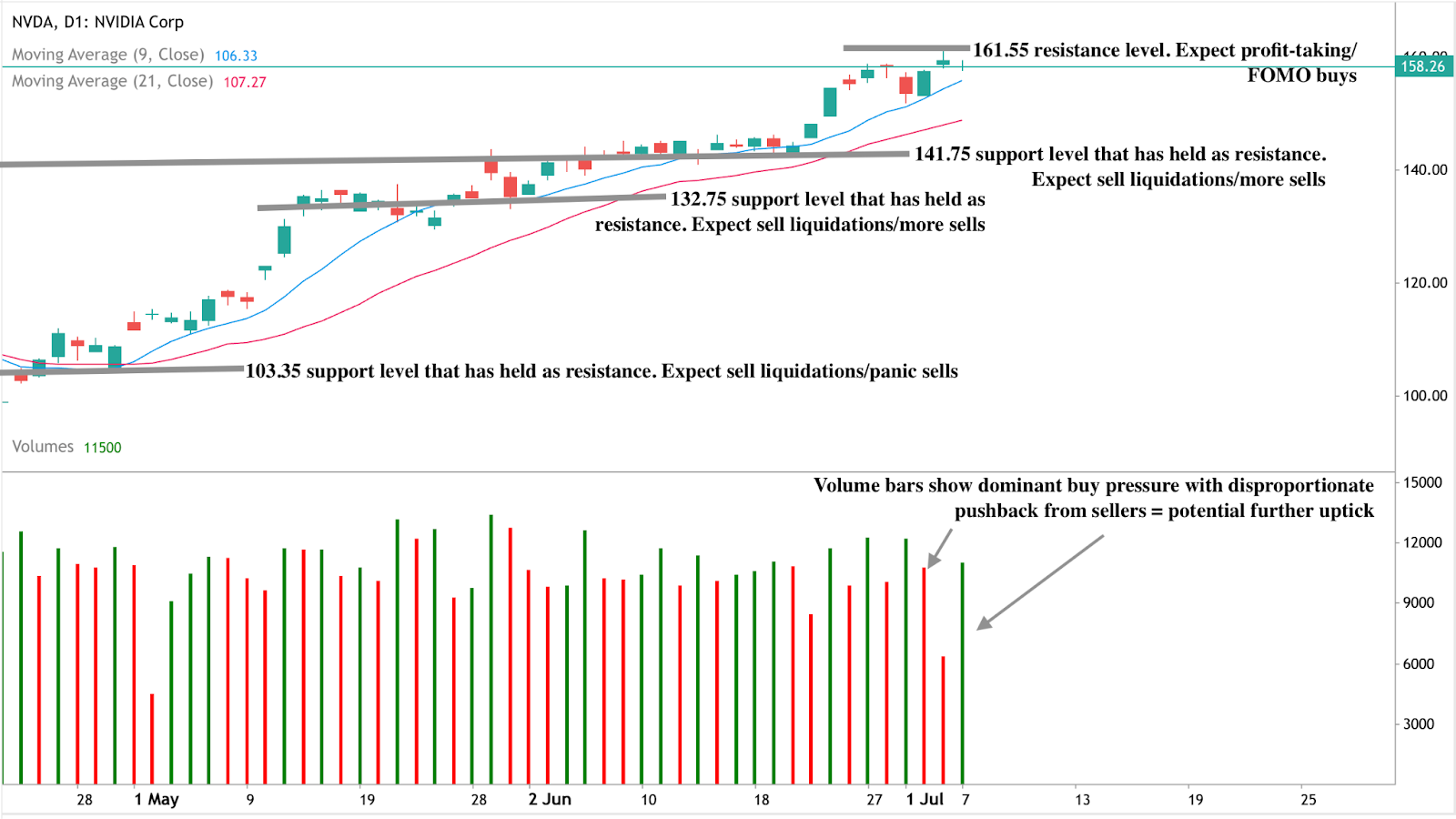 Is trading Nvidia dips a potential winning strategy? You can speculate on Nvidia’s price trajectory with a Deriv MT5 account.
Is trading Nvidia dips a potential winning strategy? You can speculate on Nvidia’s price trajectory with a Deriv MT5 account.AI stocks fuel momentum as the stock market rallies 50% past bonds
By Deriv
The US stock market is now 50% larger than the bond market, a gap we haven’t seen since the 1970s. And quietly sitting near the centre of it all? Alphabet and Tesla, two familiar names navigating an AI-fuelled moment that’s reshaping the investing landscape.
Bitcoin price breaches $85,000 as crypto enters a new phase
By Deriv
Bitcoin just hit $85,000, and the crypto world is buzzing with bullish energy. It’s not just a number-it’s a signal. A signal that momentum is building, whales are stirring, and the crypto market might be stepping into a new era.
But with all this hype, we’ve got to ask: is this a breakout or a bluff?
Dollar is losing ground to gold as the safe-haven
By Deriv
Gold hits record $3,245 as Dollar Index crashes below 100 for the first time in three years. Goldman Sachs now predicts gold will reach $3,700 by 2025.
Bitcoin price drop raises crypto safe-haven doubts
By Deriv
After weeks of remarkable resilience, Bitcoin is showing signs of strain. The largest cryptocurrency by market cap dropped to a three-week low of $77,700 over the weekend, falling more than 6% in 24 hours as global investors grappled with escalating trade tensions and a broad sell-off in risk assets.
Gold and Silver Investment: Will the safe-haven demand hold?
By Deriv
Gold is on fire, and silver isn’t far behind. With global trade tensions rising, precious metals are cashing in on market uncertainty, proving why they remain the ultimate haven investments.
Gold and Silver price forecast: What’s next after breaking key levels?
By Deriv
Gold is back in the spotlight after smashing through $3,120! But this isn’t just another price movement-it’s a major signal about what’s coming next. Between Trump’s tariff threats, growing recession fears, and geopolitical chaos, we’ve got the perfect storm for gold.
2025 market outlook: What’s next for Gold & Bitcoin as risk appetite rises?
By Deriv
Gold extended its losing streak for a third straight day as shifting market sentiment fueled a move away from safe-haven assets. Despite a 13% gain this year, the yellow metal is under pressure as investors pile into riskier assets, driven by optimism surrounding Trump's tariff strategy and a resilient U.S. economy.
Trump tariff impact on currencies: Will his strategy backfire?
By Deriv
According to analysts, the Japanese Yen has hit a two-week low against the US dollar, with USD/JPY climbing above 149.50 during Tuesday's Asian session. This marks the third straight day of losses for the Yen, as global risk appetite improves on the back of China's economic stimulus efforts and hopes for progress in Ukraine peace talks.
Tariffs and Inflation: Will these be the biggest market movers of 2025?
By Deriv
The financial markets are currently navigating through turbulent waters as two powerful forces-tariffs and inflation-create a complex economic landscape. Recent developments in gold and copper markets illustrate how these dynamics are shaping investor behaviour and commodity prices. But which will ultimately drive more market volatility?
Dollar Yen exchange rate 2025: Fed weakness vs BOJ strength reshaping currency markets
By Deriv
As global markets brace for the US February inflation data release on 12 March, currency traders are closely monitoring the evolving monetary policy landscapes in both the United States and Japan. The diverging paths of the Federal Reserve and Bank of Japan are creating compelling narratives for the dollar and yen in 2025, with significant implications for investors and economic stakeholders.

